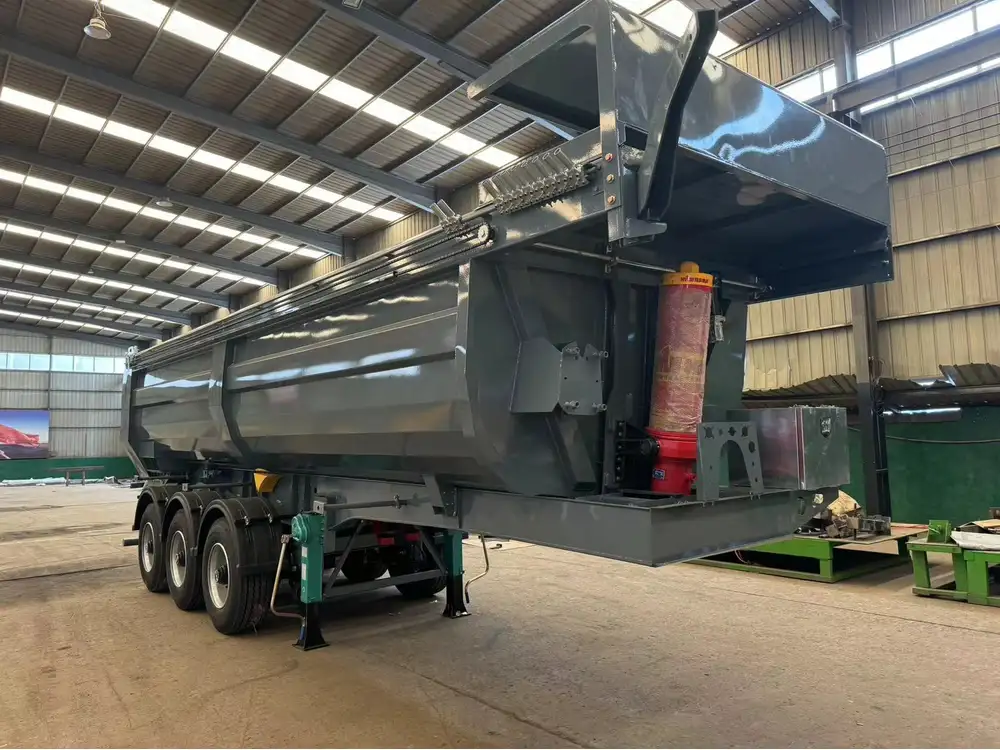When it comes to operating dump trailers, one crucial aspect often overlooked is the effective management and maintenance of the battery that powers them. Understanding how long to charge the dump trailer battery not only ensures reliability but also extends the lifespan of your investment. This article provides an exhaustive guide to the charging process, factors affecting charging time, maintenance tips, and more.
Understanding the Dump Trailer Battery System
Types of Batteries Used in Dump Trailers
Dump trailers commonly utilize two types of batteries: Lead Acid Batteries and Lithium-Ion Batteries.
| Type | Advantages | Disadvantages |
|---|---|---|
| Lead Acid Batteries | Cost-effective, widely available | Heavier, shorter lifespan, requires maintenance |
| Lithium-Ion Batteries | Lightweight, longer lifespan, faster charging | Higher initial cost, sensitive to temperature |
Each type has its own charging characteristics. Knowing the type of battery your trailer uses is vital for effective management.

Battery Specifications
Before diving into the charging process, it’s essential to understand the specifications of your battery. Common parameters include:
- Amp-Hours (Ah): Indicates how much charge the battery can store.
- Voltage Rating: Usually 12V, but some setups may vary.
- Cranking Amps (CA): Important for starting applications.
Ensuring that your vehicle’s charging system matches the specifications of the battery is crucial for normal operation.
How Long to Charge a Dump Trailer Battery
Charging Time Basics
Charging time can vary significantly based on several factors:
- Battery Type
- Battery Condition
- Charger Output
- Current Charge Level
On average, the charging time for a lead-acid dump trailer battery can range from 8 to 12 hours, while lithium-ion batteries might take 2 to 4 hours when using a compatible charger.

Factors Influencing Charging Time
1. Charger Output
Charger output, measured in Amperes (A), plays a pivotal role in determining charging duration. For instance, a charger rated at 10A can generally charge a 100Ah battery in about 10 hours under optimal conditions.
2. Depth of Discharge (DoD)
The Depth of Discharge indicates how deeply the battery has been discharged. A battery that starts with a full charge and is only partially depleted will require less time to charge compared to one that is fully drained.

3. Battery Age and Condition
An older battery or one that has suffered degradation will inherently take longer to charge. Regularly testing the health of the battery can provide insights into its charging characteristics.
Charging Examples
Example 1:
A new, fully functional 100Ah lead-acid battery with a charger output of 10A:
- Starting charge level: 50%
- Time to charge: Approximately 5 hours
Example 2:
An aging 100Ah lead-acid battery with a charger output of 5A:
- Starting charge level: 20%
- Time to charge: Approximately 16 hours
Understanding these scenarios can help in planning the charging more effectively.
Proper Charging Techniques for Dump Trailer Batteries

Step-by-Step Charging Process
Pre-Check Assessment:
- Examine the battery for physical damage or leakage.
- Ensure terminals are clean and corrosion-free.
Select the Appropriate Charger:
- Always match the charger type (smart, automatic, or trickle) with the battery specifications.
- Utilize chargers that offer multiple charge settings (1A, 5A, 10A, etc.).
Connection:
- Connect the positive (red) cable first, followed by the negative (black) cable.
- Ensure a secure connection to prevent sparking.
Monitor the Charging Process:
- Keep an eye on the battery voltage using a multimeter: ideal charging voltage should be between 13.8V to 14.4V for lead-acid batteries.
- For lithium-ion batteries, ensure it stays within 14.6V.
Disconnection:
- Once charging is complete, disconnect the negative (black) cable first, followed by the positive (red) cable, to prevent electrical shorts.
Recommendations for Efficient Charging
- Avoid Deep Discharge: Aim to recharge batteries when they reach 50% capacity to extend battery life.
- Regular Maintenance: Clean terminals regularly using a mixture of baking soda and water to prevent corrosion.
- Temperature Awareness: Charge batteries at room temperature (around 20°C or 68°F) for optimal performance.
Identifying Charging Problems

Signs Your Battery Isn’t Charging Properly
Charging Takes Too Long:
- If charging consistently exceeds the expected time frames, it may indicate battery degradation or charger malfunction.
Battery Swelling:
- A swelling battery is a sign of overcharging or damage; it should be replaced immediately.
Slow Cranking:
- Difficulty in starting the system can indicate insufficient battery power despite showing a charge.
Troubleshooting Techniques
- Inspect the Charger: Check for functionality. A faulty charger can underperform, delaying the charging process.
- Examine Battery Connections: Ensure all connections are secure and free from corrosion.
- Perform a Load Test: A load test helps determine the overall health and remaining capacity of the battery.
Seeking Professional Help
If issues persist, consider consulting a professional or replacing the battery. Prolonged problems can lead to irreversible damage not only to the battery but also to equipment relying on it.

Conclusion
Effectively managing the charging process of dump trailer batteries is essential for ensuring continued performance and longevity. By understanding the variables affecting charging time, employing best practices for charging, and being vigilant for signs of battery problems, manufacturers and operators can significantly enhance the effectiveness of their dump trailers.
In Summary
- Charging Time: 8-12 hours for lead-acid, 2-4 hours for lithium-ion.
- Key Factors: Charger output, battery age/health, depth of discharge.
- Maintenance: Regular cleaning, avoiding extreme temperatures, and timely recharges.
By adhering to these guidelines, you can streamline your operations and maximize the functionality of your dump trailers, fostering an efficient and reliable working environment.



